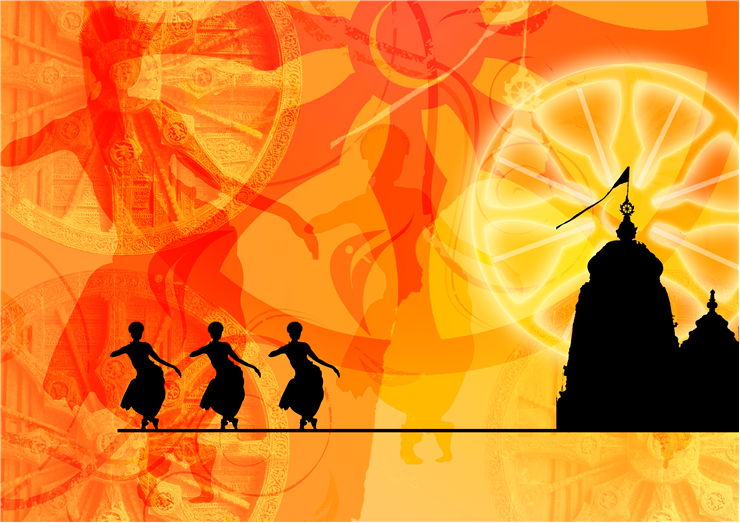Dance in Religion and Mythology
Since the dawn of human civilization, dance was incorporated as an important part of our culture and religion. Its ability to simulate or describe events or myths, enchant the audience and dancers with ecstasy, belief, happiness, and trance was quickly implemented into many religious ceremonies, rituals and celebrations of ancient civilizations.
The first proof of existence of dance came from the 9000 year old cave paintings in India which described celebration, drinking and dancing of tribe members after successful hunt. These dance performances were soon adopted into early religions, often serving as a very effective way to describe various myths, legends and astronomical events. Because the lack of written word prevented the knowledge to pass on effectively into new generations, dance served as a storytelling device by telling tales of past times and myths.
Almost every ancient religion had a deity that was closely related to dance. Egyptian had the goddess Bast, which held domain of sensual pleasure, dancing, music and health. The culture of Ancient Egypt celebrated their gods by many forms of dancing, both in religious ceremonies and in entertainment -paintings from unearthed tombs showed the scenes of scantily dressed girls dancing to the crowd, accompanied by the musical band.

Greeks and Roman continued the tradition of incorporating dance into their religion and common life. Greek god Apollo held the domain of medicine, music and poetry, but it was also called The Dancer. Another popular Greek god that was celebrated by annual celebration filled with alcohol and dance was Dionysus (Bacchus in Roman Empire). The famous area of Greece called Sparta even had a law that compelled boys older than five to dance with their elders, sing songs, hymns and prepare their bodies for eventual life in military.
Hindu religion has a very close bond to dancing. From their point of view, entire universe was created by the dance of the Supreme Dancer Nataraja, and every of their 23 gods have their own way of manifesting power trough dance movements. Because of that, the entire culture of Hinduism practices dance almost on daily basis. Buddhism however is known only for their Korean Seungmu dance, which is today protected as one of the earths most prized heritages.
Dance is also incorporated in Christianity and Judaism. Mentions of dance are present in all of their holy books that date from 2000 years ago, and the followers of these religions continue to preserve dance and incorporate it into daily rituals. Brazilian martial art and dance Capoeira is often performed with lyrics that praise God. Even though several independent congregations of Christian churches forbid the use of dance in religion, majority of Christian support dancing and Christian themed music is today preformed across variety of music genres. Jews have also incorporated dance into many of their rituals, most notably weddings.
